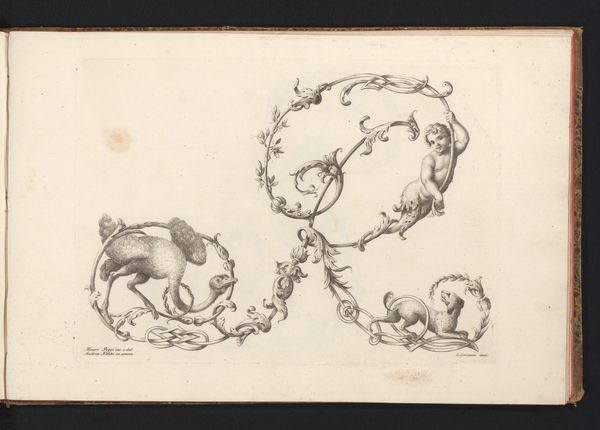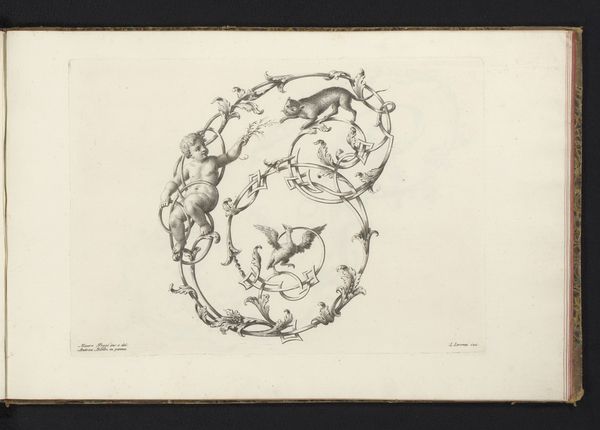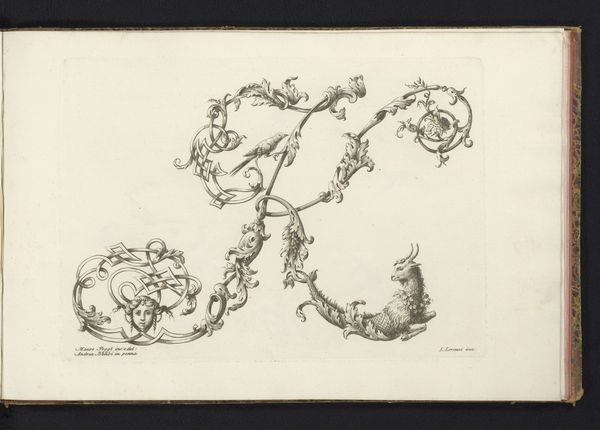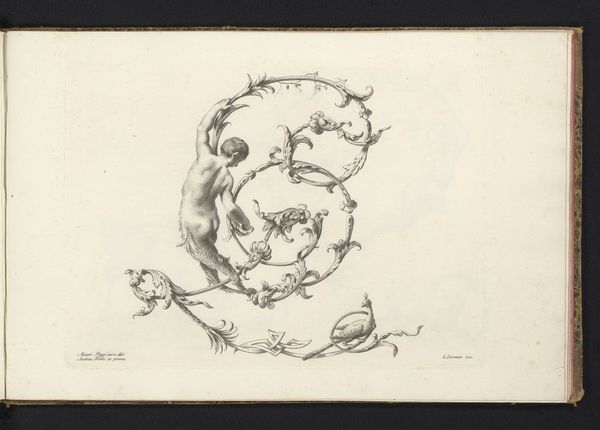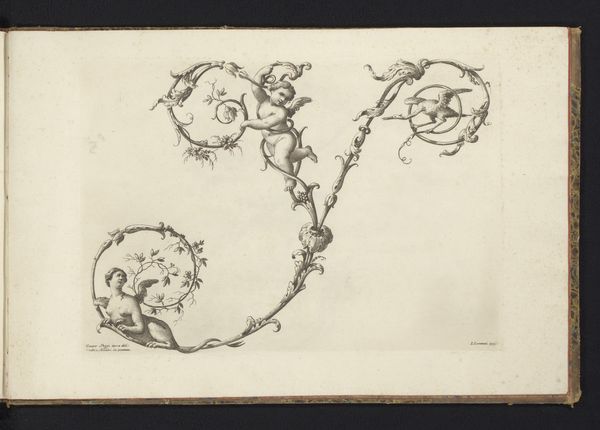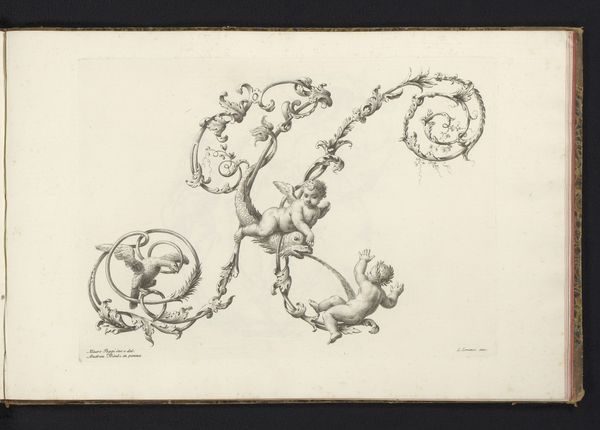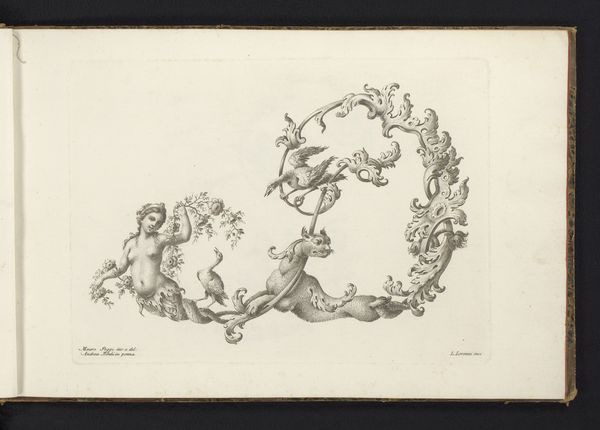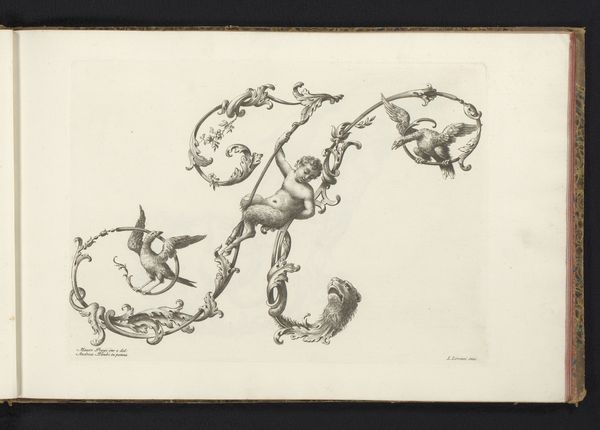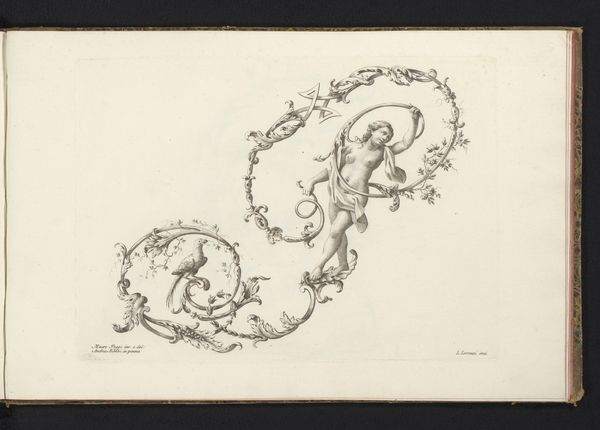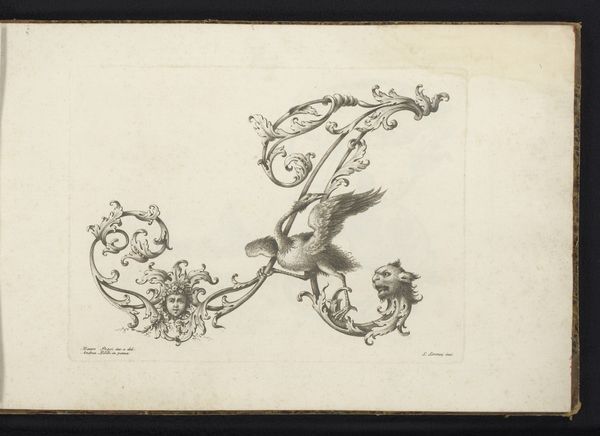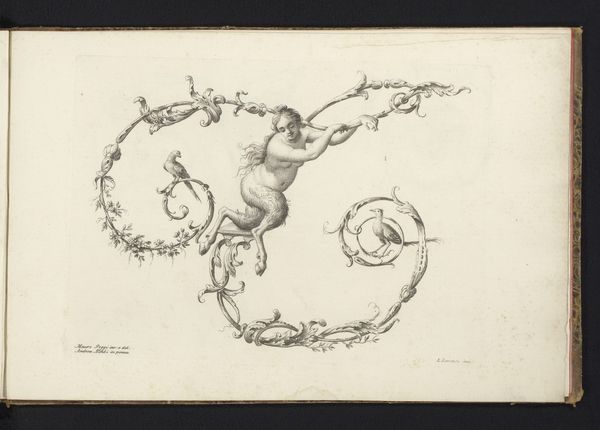
drawing, paper, ink
#
drawing
#
allegory
#
baroque
#
pen sketch
#
sketch book
#
figuration
#
paper
#
personal sketchbook
#
ink
#
pen-ink sketch
Dimensions: height 226 mm, width 315 mm
Copyright: Rijks Museum: Open Domain
Editor: Here we have "Ornamentele letter S," a pen and ink drawing on paper by Lorenzo Lorenzi, created sometime between 1745 and 1765. It's essentially a decorative letter S, full of Baroque-style flourishes and figures. It's so ornate and captivating. What do you see in this piece that stands out to you? Curator: Initially, one observes the line work: its dynamism and variation in weight create a rich textural surface, which articulates form while simultaneously disrupting pure contour. The allegorical figures, integrated into the serpentine 'S,' suggest an investigation into the interplay of form and symbol typical of Baroque aesthetics. How do the visual relationships strike you? Editor: I see how the artist used the shapes of figures like cherubs and satyrs to construct the letter itself. The integration feels very deliberate. What about the choice to render it simply in pen and ink? Curator: The reduction to monochrome compels the viewer to focus on the intrinsic graphic qualities—the modulation of light and shadow achieved through hatching, cross-hatching, and the considered application of ink wash. Consider the negative space too: how it actively contributes to the legibility and balance of the composition. Editor: That’s a great point. It’s not just about what’s there, but also the space around it defining the image. Are there any similar artistic principles or structural decisions in Baroque art generally? Curator: The dynamism of line, the integration of figure and form, the dramatic use of light, and the engagement of negative space were all critical formal preoccupations of Baroque artists more broadly. Do you see that reflected in the composition? Editor: I do! Thanks so much for guiding me through this. Looking at it with these elements in mind helps understand the structural elegance of the piece. Curator: And in attending to these inherent artistic qualities, one hopes that future viewers may also appreciate how this graphic work contributes to broader discussions of art-historical production and reception.
Comments
No comments
Be the first to comment and join the conversation on the ultimate creative platform.
